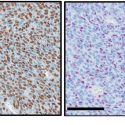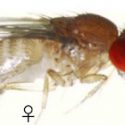UW–Madison researchers study plant aging, gain insights into crop yields
New insights into the mechanism behind how plants age may help scientists better understand crop yields, nutrient allocation, and even the timing and duration of fall leaf color.
In a new paper published today (Tues., Nov. 22) in the journal eLife, the University of Wisconsin–Madison’s Xuehua Zhong and her colleagues describe how an epigenetic protein complex acts as a link between the environment and the genome to promoting the onset of aging in plants.
That complex is a specific histone deacetylase (HDAC) called HDA9 and it helps translate environmental signals, like darkness, into epigenetic change. Epigenetics refers to the alterations that influence the expression of genes encoded within the DNA of living organisms, rather than changes to the DNA itself.
For instance, fall colors change when shorter daylight hours influence the expression of the genes responsible for particular leaf pigments.
“Epigenetics is one of the important players in the cross-talk between the environment and our bodies,” says Zhong, assistant professor of genetics and a faculty member at the Wisconsin Institute for Discovery. Her research focuses on how gene expression in growth and development is regulated by epigenetic modification and how that regulation can be influenced by environmental stimuli.

An epigenetic protein called HDAC jumpstarts the process of aging, which is responsible for the many-colored leaves of the fall season, according to new research from UW–Madison. Photo: Bryce Richter
Aging, or senescence, is an elaborate process vital to the life cycle of a plant. The efficiency of this process has critical implications for biological success: Premature aging could result in a reduction in yield, a grave concern for the production of offspring and cultivation of crops. Belated senescence, on the other hand, reduces a plant’s efficiency by delaying reallocation of nutrients and may impact the viability of the next generation.
By searching the genome of the common experimental plant model Arabidopsis thaliana (commonly known as thale cress) for locations where HDA9 binds, Zhong’s group found evidence that it is a key player in the senescence process. It acts on previously identified genes that code for various components of aging.
“We found that this protein binds to a lot of genes that have potential functions in the aging process. That provides some other information which led us to study the potential functions in [the process],” says Xiangsong Chen, a postdoctoral researcher working with Zhong and first author on the paper.
The team says that the newly-profiled HDAC jumpstarts the process of aging, which is responsible for the many-colored leaves of the fall season. This process is also of key importance commercially, Zhong says, and the mechanistic insight into the initiation of aging is a significant step forward in epigenetics research.
“We believe that this information will provide a foundation for developing a new strategy to manipulate the plant aging processes to improve crop productivity, which could prove very beneficial for agricultural improvement,” says Zhong.



